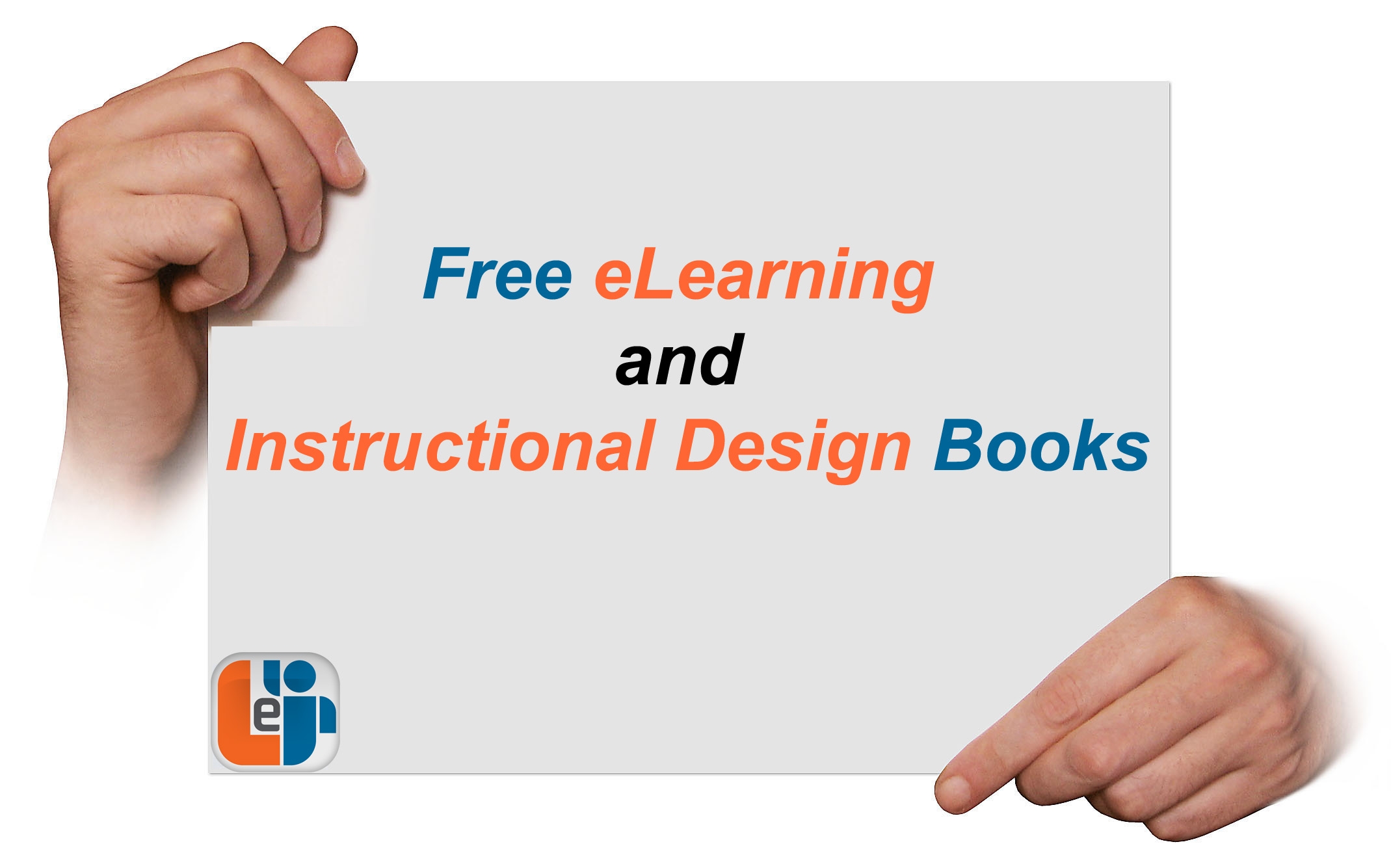10 Instructional Design Books That You Should Read
Reading book about instructional design is important to keep your knowledge and skills sharp. At this post I will present you a list of 10 recently released book in the field of instructional design. If you have read any of the books please share with me your thoughts. I just bought the "Leaving Addie for SAM" and as soon as I finish it I will share with you my thoughts.
- Leaving Addie for SAM: An Agile Model for Developing the Best Learning Experiences by Michael W. Allen and Richard SitesLeaving ADDIE for SAM introduces two new concepts SAM, the Successive Approximation Model, and the Savvy Start. Together, they incorporate contemporary design and development processes that reduce the complexity of instructional design and development, yielding more energetic and effective learning experiences. This book is a must-read for all learning professionals who have a desire to let go of outmoded methodologies and start creating better, faster training products today.
- Ten Steps to Complex Learning: A Systematic Approach to Four-Component Instructional Design by Jeroen J. G. van Merriënboer and Paul A. KirschnerTen Steps to Complex Learning presents a path from a training problem to a training solution in a way that students, practitioners (both instructional designers and teachers), and researchers can understand and easily use. Practitioners can use this book as a reference guide to support their design of courses, materials, or environments for complex learning. Students in the field of instructional design can use this book to broaden their knowledge of the design of training programs for complex learning.
- Instructional Alignment: Optimizing Objectives, Methods, and Assessment for Developing Unit Plans by Suzanne Houff In response to a quagmire of jargon based and convoluted curriculum textbooks, Instructional Alignment offers a concise and basic approach to instructional design. By exploring the areas of planning, assessment, and methodology, the text explains how these three areas provide an essential framework for effective teaching and illustrates how they align in order to maximize student learning.
- Instructional-design Theories and Models: A New Paradigm of Instructional Theory, Volume II: 2 (Instructional Design Theories & Models) by Charles M. ReigeluthInstructional theory describes a variety of methods of instruction (different ways of facilitating human learning and development) and when to use--and not use--each of those methods. It is about how to help people learn better.
- First Principles of Instruction by M. David Merrill This handy resource describes and illustrates the concepts underlying the “First Principles of Instruction” and illustrates First Principles and their application in a wide variety of instructional products. The book introduces the e3 Course Critique Checklist that can be used to evaluate existing instructional product. It also provides directions for applying this checklist and illustrates its use for a variety of different kinds of courses. The Author has also developed a Pebble-in-the-Pond instructional design model with an accompanying e3 ID Checklist. This checklist enables instructional designers to design and develop instructional products that more adequately implement First Principles of Instruction.
- Leading for Powerful Learning: A Guide for Instructional Leaders by Angela Breidenstein, Kevin Fahey, Carl Glickman and Frances HensleySupporting teacher learning is a complicated and challenging task. This much-awaited book offers a practical, research-based framework for thinking about instructional leadership, along with the necessary resources and tools for improving practice. The authors identify specific structures, formats, and strategies that an instructional leader can use to support new and veteran principals and teacher leaders. They then discuss ways to think about which structures are most appropriate for particular settings, offering suggestions on the most effective way to work with these structures. This unique book combines theory with best practices to create a vision of how 21st-century instructional leaders can improve education for all students.
- Instructional design practices in the design and development of Digital Humanities virtual environments (DH-VEs). by Valerie Hunter KellyVirtual environments, virtual worlds, simulations, 3D models are loaded with potential, promise, and problems. While learning in virtual settings is still being researched, instructional designers are challenged as to which instructional design practices are best suited for virtual environments (VEs). The problem is there is a lack of a conceptual or analytical framework in which to inspire instructional design. Through VEs, Humanities scholars and learners are able to experience ancient cultures and artifacts, as they existed centuries ago---a privilege previously impossible prior to the digitization of ancient environments. This research study briefly examines various types of learning conducive to Digital Humanities virtual environments (DH-VEs) and expounds on the instructional design behind the scenes that make possible the creation of such vivid environments.
- Designing Training and Instructional Programs for Older Adults (Human Factors & Aging) by Sara J. Czaja and Joseph SharitA comprehensive state-of-the-science review, Designing Training and Instructional Programs for Older Adults explores a broad range of issues, from the implications of theories of learning for designing instruction for older adults to adapting current perspectives on methods of instructional design to accommodate the capabilities and limitations of older learners.
- Instructional design and online learning: A quality assurance study by Rose M MonroeThe purpose of this study was to investigate the difference in the evaluations of online course quality using the Quality Matters model among four groups of reviewers: instructional designers, faculty with subject-matter expertise, peer faculty with no subject-matter expertise, and administrators. A causal-comparative design was utilized to determine whether the groups differed in their ratings. Instructional designers and other respondents for this study were recruited from several listservs and Maryland colleges.
- Instructional Design: International Perspectives: Volume I: Theory, Research, and Models: Volume II: Solving Instructional Design Problems: 1 by Norbert M. Seel, Sanne Dijkstra, Franz Schott and Norbert SeelThe goal of this two-volume set is to establish international foundations for ID theory, research, and practice within the framework of the two following objectives. First to identify and define the theoretical, research, and model foundations for ID, and second to bridge the gap between ID foundations and application.
Originally published on November 23, 2012







